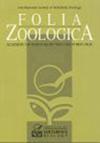Sexual dimorphism in size and shape of traits related to locomotion in nine anuran species from Serbia and Montenegro
Q2 Agricultural and Biological Sciences
引用次数: 11
Abstract
Investigation of sexual dimorphism patterns give us insight in how organisms adapt to fulfill their roles (reproductive, ecological, social) and enhance fitness. We examined sexual size and shape dimorphism in traits related to locomotion of nine anuran species from Serbia and Montenegro (Hyla arborea, Bombina variegata, Bufotes viridis, Rana temporaria, R. graeca, R. dalmatina, Pelophylax kl. esculentus, Pelobates fuscus and P. syriacus). Sexual size dimorphism in studied species ranges from female and male-biased, to absence of dimorphism. Sexual shape dimorphism was most pronounced in the forelimbs while the differences were small or did not exist in the hindlimbs and sacral traits. Males of most species were characterized by longer proximal parts (humerus and radioulna) and shorter distal forelimb parts, while the opposite pattern was observed in females. Also, some cases of significant intersexual shape differences are size-dependent. This indicates that these male traits are under stronger selective pressures to increase relative to body size, which may allow them to outcompete other males. Different types of behaviour can indirectly shape the limb morphology and lead to differences between the sexes. More data on the ecology and natural history of these animals are needed to explore the factors underlying the observed sex differences.塞尔维亚和黑山九种无尾猿运动相关性状的大小和形状的两性二态性
对两性二态性模式的研究使我们了解生物体如何适应以实现其角色(生殖、生态、社会)并增强适应性。研究了来自塞尔维亚和黑山的9种无脊椎动物(Hyla arborea, bomina variegata, Bufotes viridis, Rana temporaria, r.g raeca, r.d almatina, Pelophylax kl. esculentus, Pelobates fuscus和P. syriacus)的性别大小和形状二态性。在研究的物种中,性别大小二态性的范围从雌性和雄性偏倚到没有二态性。性别形态二态性在前肢最为明显,而在后肢和骶骨性状上差异较小或不存在。大多数种类的雄性具有较长的近端(肱骨和桡尺骨)和较短的远端前肢的特征,而雌性则相反。此外,在某些情况下,显著的两性外形差异与尺寸有关。这表明这些男性特征在相对于体型增加的更强的选择压力下,这可能使他们在竞争中胜过其他男性。不同类型的行为可以间接地塑造肢体形态,并导致两性之间的差异。需要更多关于这些动物的生态和自然历史的数据来探索所观察到的性别差异背后的因素。
本文章由计算机程序翻译,如有差异,请以英文原文为准。
求助全文
约1分钟内获得全文
求助全文
来源期刊

Folia Zoologica
生物-动物学
CiteScore
1.70
自引率
0.00%
发文量
0
审稿时长
3 months
期刊介绍:
Information not localized
 求助内容:
求助内容: 应助结果提醒方式:
应助结果提醒方式:


